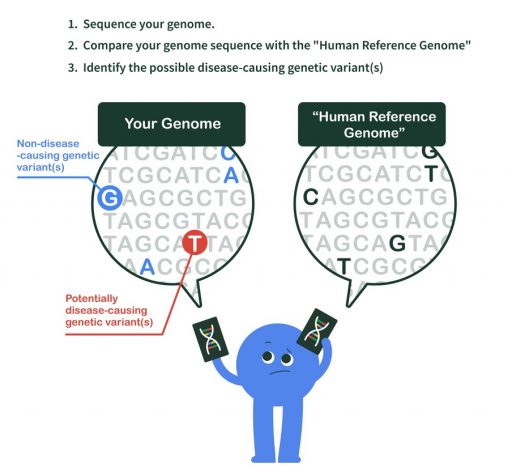“Whole Genome Sequencing” (WGS) technology enables us to understand more about the human genome. It includes three main steps:
1. Sequencing
As the name suggests, sequencing is the process of reading 3 billion DNA bases in the human body one by one in order.
2. Data processing
After obtaining a large amount of genomic data from sequencing, bioinformaticians have to transform them into interpretable information. They have to compare the sequenced DNA with the “Human Reference Genome”, then detect the differences between the two. These differences are called genetic variants. There are millions of genetic variants in our body, and most of which are not disease-causing. On the contrary, they are what make us unique.
3. Data Analysis
Data Analysis is the most complex and time-consuming step. It involves the identification of disease-causing variants, also called pathogenic/likely pathogenic variants, among millions of genetic variants. It requires not only the knowledge and advancement in genomic science and genomic medicine, but also a large number of cases for long-term analysis and research.

